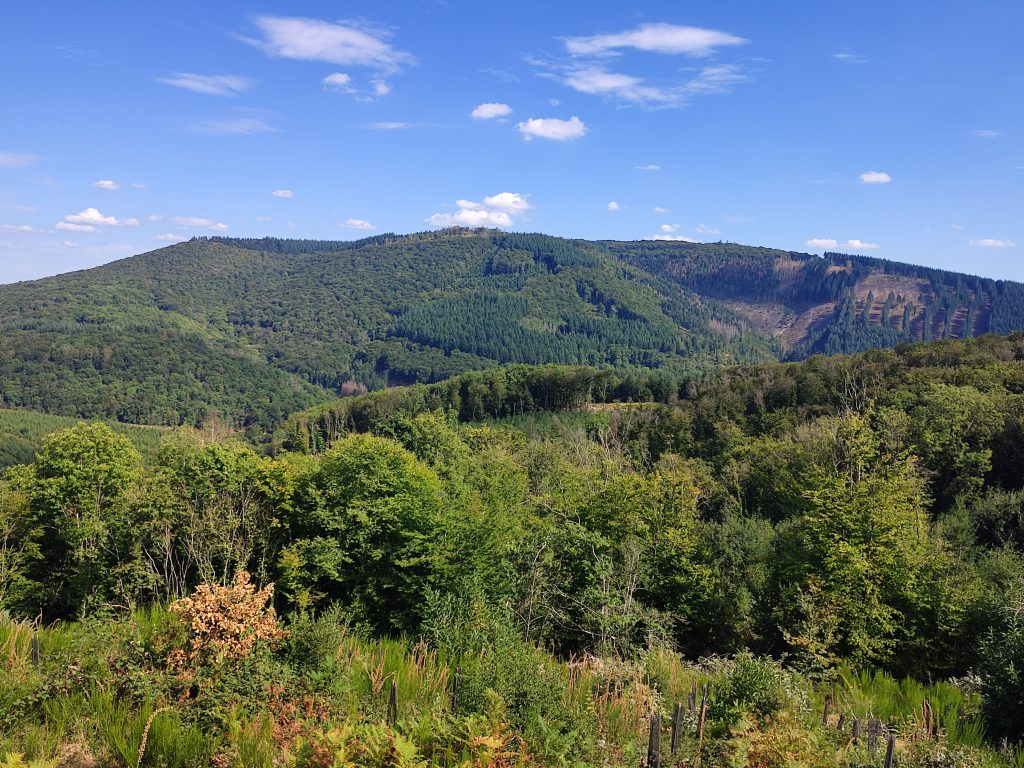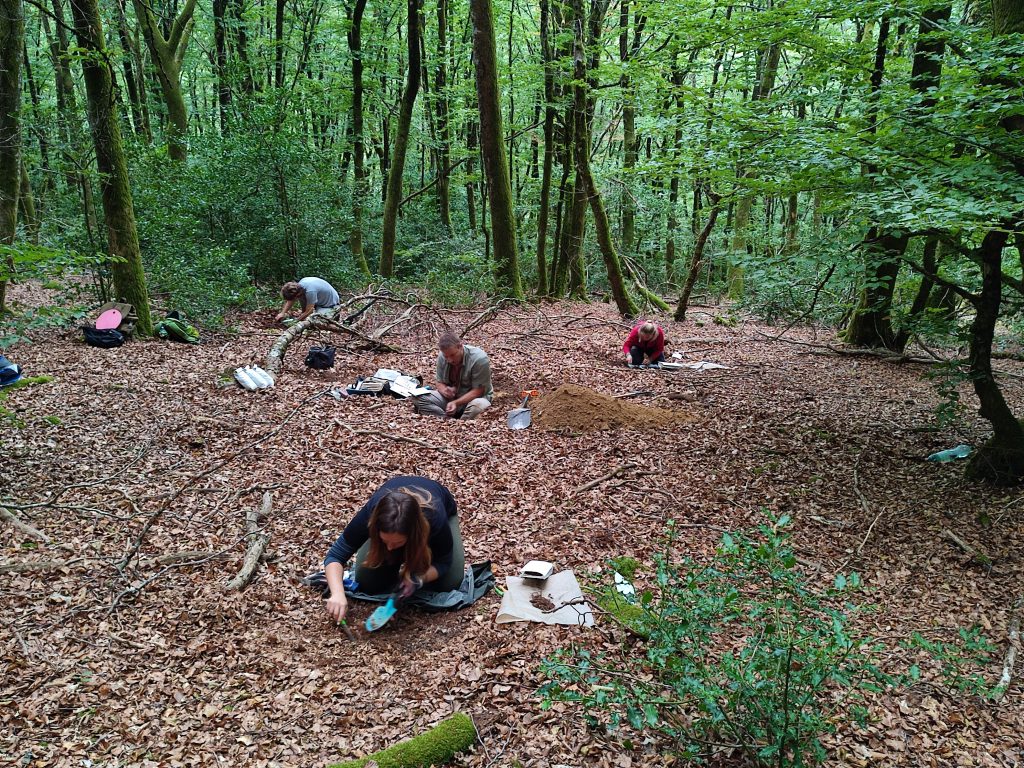At the French archaeological site of Bibracte, scientists from the Department of Geology and Soil Science of the FFWT MENDELU are participating in European research. Their aim is to propose suitable measures for the conservation and adaptation of the local forests. The site is located within the territory of the Morvan Nature Park and includes the massif of Mt. Beuvray and also an important ancient Celtic oppidum, which was even mentioned by Julius Caesar in his writings. To this day, the location has preserved the character of the ancient foothill rural landscape with a mosaic of forest, agricultural land and bodies of water. A diverse scientific community is striving to preserve it.
“Within the Forestry Lab Bibracte project, in which the National Forests of France, the University of Dijon, the University of Orléans and the Morvan Natural Park are all involved, our specific task is to obtain information on the soil cover and other abiotic factors affecting the current forests over a large area of almost 900 ha of the Bibracte massif so that we can propose appropriate measures for their conservation and adaptation,” explains Aleš Bajer, who as a geoarchaeologist has already participated in archaeological excavations in the Celtic oppidum of Bibracte.
Last year, researchers dug 21 classic soil probes, which they also fully described, and soil analysis is now underway. Meteorological stations were placed at three locations, which continuously measure temperature and humidity at three depths within the soil and two meters above the ground. The data obtained will form the basis for determining appropriate measures in the Bibracte forest complex, so that the character of the sparsely populated area, where people are engaged in traditional activities such as agriculture, forestry, tourism to some extent, and where there is no industrial production, is preserved and prospers.
“Our research is part of a more extensive research project that should contribute to the cultivation of forests on the territory of Bibracte that will be fully adapted to ongoing climate change. They will fulfil an economic function, but also other non-productive functions, e.g. soil conservation, water retention, and last but not least, the character of the entire archaeological site will be preserved. In other words, the genius loci of the area will be preserved,” says Bajer, underlining the significance of the research.
The current forest in the Bibracte massif can be divided into five groups: spruce monoculture, which has now been almost cut down, fir monoculture, sometimes with an admixture of Douglas fir (often dying), Douglas fir monoculture (often significantly damaged), in the upper parts there are bare beech trees (almost without renewal) and a mixture of deciduous trees – beech, oak, hornbeam, sometimes with an admixture of fir.
“The uniqueness of our research lies, among other things, in the fact that it is the first permitted non-archaeological intervention within the oppida, i.e. inside the walls. A number of samples have been taken for analysis, we believe that the results of the analysis will help us interpret the development of the oppida area after it was abandoned by the original inhabitants,” adds Bajer.



A research stay at Bibracte is also interesting for scientists from the point of view of the work base and available research infrastructure. The host organization not only provides foreign teams with accommodation and the possibility of catering directly on the spot, but the scientists also have at their disposal functional laboratories, training rooms and a library that is open 24 hours a day.
“Collected field samples can therefore be partially processed directly in local laboratories and other necessary sources of information can be found in the local library,” says Marie Balková of the advantages of this work base. Balková is participating in the research as a specialist in geoinformation technology.
Further field research at the site is planned for late spring 2023. In addition to digging further soil probes, the scientists are also planning research into the light conditions of the studied sites.
The importance of the Bibracte location is also evident in it being awarding the status of “Grand Site de France” by the French Ministry of the Environment in 2007, which has so far been awarded to only a few dozen locations throughout France. This status is a guarantee that, within a given heritage-protected locality, there is harmony between environmental conservation, the needs of local residents and those of visitors.
Contact person for further information: Doc. M.Sc. Aleš Bajer, Ph.D., Department of Geology and Soil Science FFWT MENDELU, e-mail: ales.bajer@mendelu.cz, Tel: 775 331 666
More news
-
The Horizon Europe project, Eurasian Network for Collaborative Research on Tree-Root-Mycorrhizal-Pathogen Interactions in Forest Soils (EuAsiaN-ROOT), coordinated by the Faculty of Forestry and Wood Technology, aims to provide a deeper…24. 6. 2025
-
Five Female Wolves Fitted with GPS Collars in the Beskydy and Javorníky…
Researchers from the Faculty of Forestry and Wood Technology at Mendel University in Brno have successfully captured and fitted GPS telemetry collars on five female wolves in the Beskydy and Javorníky Mountains over the past two years. These…28. 5. 2025 -
FFWT launches unique data collection on forest ecosystem functioning in MENDELU…
The Department of Forest Ecology at the Faculty of Forestry and Wood Technology of Mendel University in Brno (FFWT MENDELU), in cooperation with the Masaryk Forest Training Enterprise at Křtiny (ŠLP Křtiny), has launched monitoring of selected…23. 5. 2025 -
Professor Vladimír Tesař on the 30th anniversary of Pro Silva Bohemica: focus…
The Faculty of Forestry and Wood Technology and other stakeholders commemorated the thirtieth anniversary of Pro Silva Bohemica, an association of foresters dedicated to promoting close-to-nature forest management. Professor Emeritus Vladimír Tesař…9. 5. 2025 -
Scientists aim to determine which tree species have the most significant…
An international team studying the growth of 223 tree species across 160 experimental forests worldwide has found that conservative tree species—efficiently conserving resources such as nutrients, water, and energy—tend to grow faster under natural…16. 4. 2025 -
FFWT and UFE Křtiny partners of the ForDiL project supporting the education of…
The Faculty of Forestry and Wood Technology, Mendel University (FFWT MENDELU) and the University Forest Enterprise Masaryk Forest Křtiny (UFE Křtiny) are the main partners of the ERASMUS+ project Forest of the future: digital tools for learners to…11. 4. 2025 -
FFWT MENDELU and UFE Křtiny hosted Belgian students within the Erasmus+…
The students from Institut Technique Horticole de Gembloux were hosted by the Faculty of Forestry and Wood Technology, Mendel University (FFWT MENDELU) and the University Forest Enterprise Masaryk Forest Křtiny (UFE) as part of the Erasmus+ short…7. 4. 2025 -
Student Design 2025: the Upholstery Craft Award goes to MENDELU
The Student Design 2025 competition, held at the Mobitex fair at the Brno Exhibition Centre, awarded the works of students from secondary schools and universities from the Czech and Slovak Republics. The Upholstery Craftsmanship Award went to…2. 4. 2025 -
Pigeons' behaviour and habits in Brno: Research by the Faculty of Forestry and…
The Department of Forest Conservation and Wildlife Management at the Faculty of Forestry and Wood Technology (FFWT) has been conducting research on urban wildlife for more than two years. One part of the research focuses on wild pigeons,…26. 3. 2025 -
FFWT MENDELU participates in Diplomacy Week
The Faculty of Forestry and Wood Technology of Mendel University (FFWT MENDELU) is participating in Diplomacy Week, which takes place from 24 to 28 March 2025 in the Czech Republic. On this occasion, the Deputy Ambassador of Bosnia and Herzegovina…18. 3. 2025